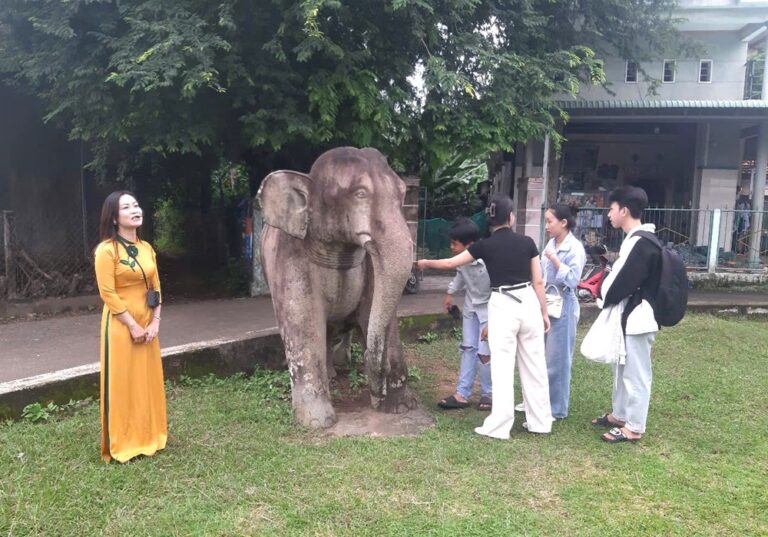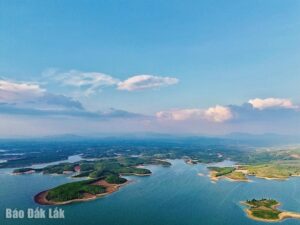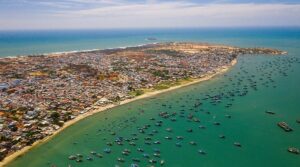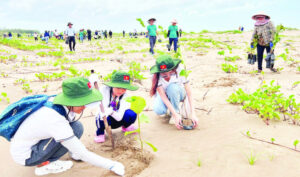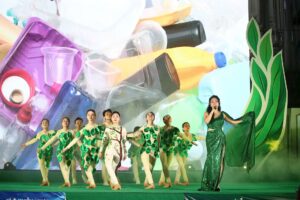Every visitor to Can Tho will inevitably spend at least a morning at Cai Rang floating market, a vibrant, colourful and revealing symbol of the Mekong Delta’s largest city.
Life at Cai Rang floating market rises before the sun. By 5am the market is up and running. It is essentially a floating, wholesale greengrocer’s. Traders come from across the Mekong’s network of waterways and canals to buy and sell fruit and vegetables.
To see the market come alive, we decide to rise at the ungodly hour of 4am – it’s only a 6km trip from the centre of Can Tho. You have two options. You can take a boat from Ninh Kieu Quay, a small boat with 5-7 seats can be rented for VND300,000 ($15), while larger boats cost VND500,000 ($25). The second option is taking a bus from Binh An market and hiring a boat at the market for VND30,000 per person ($1.50). You can also hire the whole boat for VND150,000 ($7).
It’s our first time to the market. At first we’re not interested in buying anything. We just soak up the atmosphere as the sun, noise and excitement rise simultaneously. The din of the boat engines makes it hard to hear much; nevertheless, our boatman endeavours to tell us about the market. Each boat advertises its wares by hanging a sample off a long upright pole. This way you can see from a distance what is on offer and nobody really needs to shout. The boating skill of the traders is impressive. They suddenly twist their boat to sidle in alongside us with just the tiniest of gaps on offer. One boat catering for tourists calmly crosses our path. Cold water? Coconuts? Yes, please!
The floating market is like a village. People come for the wholesale market but additional trades flourish as a result of this mercantile gathering. You can buy breakfast – half-hatched egg, hu tieu or pho noodle soup, chao ca (rice porridge with fish). You can also find medicine, clothes, cosmetics, and many other odds, and ends. You can even find people selling lottery tickets.
The boats also double as homes. People hang washing ‘on the line’ or place potted plants on the deck. Inside you will find furniture – tables and chairs, and beds.
Our boatman is Huynh Van Phuoc, who has lived by Cai Rang market for 50 years. He tells us that life at Cai Rang market is not easy. He lives in a boat by the river’s edge. His children were born and raised there.
“We still have enough to support the family in sending children to school, but hardship and poverty have always stayed with us. It is not a spiritually rewarding life,” says Phuoc.
Here and there, by piles of pumpkins, corn, oranges or watermelons, we see women washing clothes over basins or cooking up breakfast over a charcoal stove. A group of kids play with a dog while a young mother coos her baby son to sleep.
Some locals tell us that the floating market is not as crowded as it used to be as many merchants sell their products on the river bank. Although it is still an appealing destination for visitors, many of the traders want the market to be managed more carefully in order to preserve the market and improve living conditions.
There are also environmental issues for the people of Cai Rang with the twin threats of climate change and low water level in the Mekong (caused by hydro-power works further upstream) enhancing the risk of floods and droughts downstream in Vietnam.
After visiting for the first time, I hope this fascinating symbol of the Mekong Delta will survive, in order to save something which seems to be quintessentially Vietnamese.



